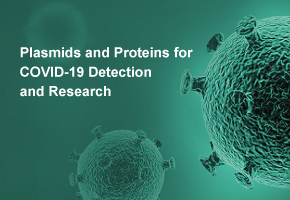Mirvetuximab Is Expected to Be Fully Launched in November 2025 — Chinese Innovative Drugs Are Reaching Patients Worldwide
As November 2025 arrives, the global pharmaceutical industry stands at a pivotal moment.
In October alone, China saw six innovative drugs approved for market launch, including the world’s first EGFR-targeting Antibody–Drug Conjugate (ADC), Becotatugvedotin for Injection.
This milestone marks a new era in precision oncology — one where targeted therapies are moving from the lab bench into real-world clinical use, symbolizing the dawn of the “precision strike” era in drug innovation.
Entering November, more candidates are awaiting regulatory decisions — turning this period into not just a peak season for global approvals, but a crucial starting point for next-generation therapies entering the market.
Here, DengYueMed International Division takes you through these developments — how they are transforming patients’ lives and reshaping the landscape of China’s pharmaceutical innovation.
Mirvetuximab Soravtansine-gynx (Elahere®) — Domestic Antibody Therapy Steps Forward
In China, Huadong Medicine Co., Ltd. recently announced that its antibody drug Mirvetuximab Soravtansine-gynx (Elahere®) has entered the Hong Kong and Macau markets via the “Hong Kong–Macao Drug Access Scheme.”
In November 2024, it received approval from the National Medical Products Administration (NMPA) for marketing in mainland China.
By September 2025, Elahere® had generated more than RMB 45 million in revenue, reflecting solid early-stage commercialization. The company revealed that nationwide market rollout is “progressing smoothly and expected to be fully implemented in November.”
To explain briefly — antibody–drug conjugates (ADCs) are designed to selectively recognize and target cancer cells, delivering cytotoxic agents directly into tumor tissue with high precision and reduced systemic toxicity compared to traditional chemotherapy.
If Elahere® achieves full-scale availability in mainland China, it will not only offer patients a new treatment option but also stand as a symbol of domestic biologics entering the competitive oncology market.
Ezvilutamide Tablets — A New Chapter in Prostate Cancer Treatment
Meanwhile, Hengrui Pharmaceuticals has been actively advancing its second-generation androgen receptor (AR) inhibitor, Ezvilutamide Tablets, with new clinical trials recently approved by the NMPA for prostate cancer.
Why is a “second-generation AR inhibitor” significant?
Prostate cancer cells rely on androgen signaling to grow — AR inhibitors essentially “mute” those growth signals.
Compared to first-generation drugs, second-generation inhibitors are more potent and less prone to cause hormone-related side effects.
With global sales of similar drugs exceeding USD 1 billion annually, Hengrui’s move signals both intensified domestic competition and a strategic expansion toward higher-end oncology therapies.
Picankibart — A New Hope for Psoriatic Arthritis
Another rising player, Innovent Biologics, is making strides in autoimmune and rheumatologic diseases.
Its investigational monoclonal antibody, Picankibart, targeting IL-23p19, has entered a Phase II/III trial involving 222 patients with active psoriatic arthritis (PsA).
PsA typically affects adults aged 30–50, often accompanied by joint pain, swelling, and red, itchy plaques that significantly impair quality of life.
Currently, most IL-23p19-targeting biologics available in China are imported; thus, a successful domestic launch could break import monopolies, lower costs, and improve access.
Here’s a brief science note from DengYueMed:
IL-23p19 acts as an “ignition switch” in the immune system. When it is turned “on,” a cascade of inflammation begins. Blocking it helps reduce inflammation at its source, alleviating redness, swelling, and pain from within.
Sevabertinib (BAY-2927088) — Dual-Mechanism Oral Therapy Under Global Spotlight
On the global stage, Germany’s Bayer AG is advancing Sevabertinib (BAY-2927088), an oral dual-mechanism therapy currently under FDA priority review for HER2-mutated non–small cell lung cancer (NSCLC) — a subtype often found in non-smoking female patients.
What makes Sevabertinib unique is its “dual-hit” design:
It inhibits both the HER2 tyrosine kinase (the signaling switch) and DHODH (a key enzyme for producing cellular building blocks).
Think of a cancer cell as an overactive factory: HER2 supplies the electricity, while DHODH ensures raw materials keep flowing.
Sevabertinib aims to cut both the power and the supply line simultaneously.
If approved, it could offer a convenient oral treatment for patients seeking effective yet life-quality–preserving therapy options.
HRS-5965 Capsules — New Progress in Rare Disease Therapy
In rare disease innovation, Hengrui’s HRS-5965 Capsules, a complement factor B inhibitor, have entered priority review for paroxysmal nocturnal hemoglobinuria (PNH) — a disorder where the immune system mistakenly destroys red blood cells, causing hemolysis and thrombosis.
In simpler terms, the patient’s red blood cells are “mistaken for enemies” and attacked by their own immune system.
The complement system acts like an internal “police force,” but when it overreacts, it harms healthy cells.
By inhibiting complement factor B, this drug helps “calm the police,” reducing red cell destruction and preventing thrombosis.
If approved, it would represent a major advance in China’s domestic capabilities for rare disease treatment — improving both survival and quality of life for PNH patients.
The Chinese Biopharma Wave: From Manufacturing to Innovation, From Local to Global
All these emerging therapies share common threads — whether through more precise targeting (IL-23p19, AR, HER2), more convenient administration (oral or long-acting injections), or expansion into previously underserved indications (PsA, PNH).
They represent not just scientific progress, but a broader transformation — one where China’s innovation is no longer following but leading.
According to DengYueMed’s industry report, the value of outbound licensing and technology deals from China’s biopharma sector surged in the first half of 2025, reflecting increasing confidence and collaboration from international partners.
For patients, this means better access to high-quality yet affordable medicines;
for Chinese pharmaceutical companies, it marks a tangible leap from a “manufacturing giant” to an “innovation powerhouse.”
Approval Is Only the Beginning
As DengYueMed emphasizes, regulatory approval is just the first step.
Real-world impact depends on insurance inclusion, physician adoption, patient affordability, and supply stability — the factors that determine whether patients can truly access and benefit from these innovations.
For many families, November 2025 may be a symbolic milestone, but real change will unfold over the next one to two years —
when treatments become longer-acting, easier to administer, and more accessible across the healthcare system.
In short, whether you are a patient, a caregiver, or an industry observer, this wave of new-generation therapeutics deserves attention.
It symbolizes not just company success or drug approval, but the systemic upgrade of healthcare, industrial capacity, and global collaboration.
For China, the journey from a “large pharmaceutical market” to a true “biotech innovation nation” is already underway.
And in this transformation, every person who cares about treatment, health, and hope will ultimately be the greatest beneficiary.
As a Chinese pharmaceutical exporter and global observer of medical developments, Hong Kong Dengyuemed will continue to provide you with the latest medical updates.
About Us · User Accounts and Benefits · Privacy Policy · Management Center · FAQs
© 2025 MolecularCloud





I don't think I could find anything better than dating site [Flirtini](https://www.flirtini.com/) . Every man wants to have who can make all his dreams come true. This is really something that can bring them an incredible amount of pleasure.
I don't think I could find anything better than dating site [url=https://www.flirtini.com/]Flirtini[/url] . Every man wants to have who can make all his dreams come true. This is really something that can bring them an incredible amount of pleasure.
I don't think I could find anything better than granny dating app <a href=https://www.flirtini.com/>Flirtini</a> . Every man wants to have who can make all his dreams come true. This is really something that can bring them an incredible amount of pleasure.